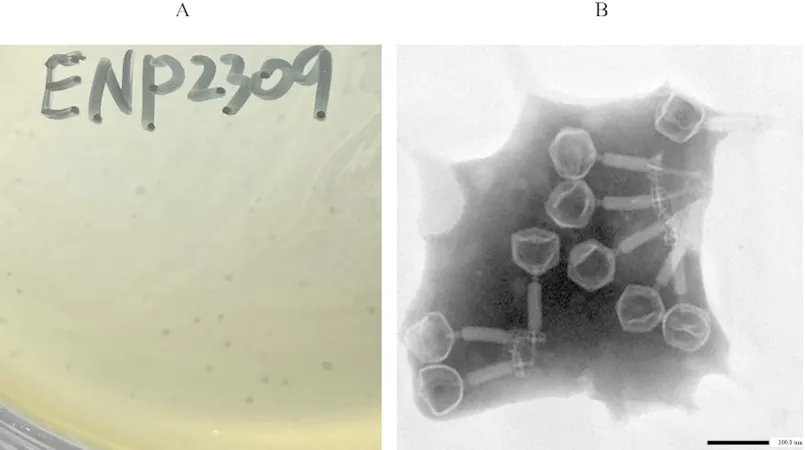
Shocking Flaws in AI-Generated Dermatology Images: Is Your Skin Tone Represented?
2025-07-23
Author: John Tan
Unveiling AI's Dermatology Deficiencies
Exciting new research has uncovered alarming shortcomings in the accuracy and diversity of AI-generated dermatologic images! A groundbreaking study led by MD candidate Lucie Joerg from Albany Medical College reveals that as artificial intelligence rapidly transforms dermatological practices, significant gaps still persist, especially concerning how these technologies cater to diverse skin tones.
Why This Matters: The Urgent Call for Inclusive AI
Patients increasingly rely on AI for self-diagnosing skin conditions, making the accuracy of these virtual representations more crucial than ever. Joerg and her team emphasize the pressing need to address these deficiencies. "Given the quick integration of AI in dermatology and the risks posed by flawed outputs, this study tackles a significant knowledge gap about whether popular AI models can effectively represent the diverse spectrum of human skin tones," they stated.
The Study: Rigorous Analysis of AI Outputs
Conducted across a range of skin conditions, the research assessed how well four leading AI models—Adobe Firefly, ChatGPT-4o, Midjourney, and Stable Diffusion—performed in generating images reflecting various skin tones. The team produced an astonishing 4,000 images by prompting the AI with specific skin conditions.
Using the Fitzpatrick scale to gauge diversity, independent raters found that a staggering 89.8% of the images depicted individuals with light skin. Only a meager 10.2% showcased dark skin tones!
Unequal Representation: The Numbers Speak
Among the AI models, Adobe Firefly stood out with a representation of 38.1% for dark skin tones, aligning closely with U.S. demographic data. However, ChatGPT-4o, Midjourney, and Stable Diffusion severely underperformed, displaying just 6.0%, 3.9%, and 8.7% for darker skin tones, respectively, all statistically significant deviations.
Accuracy Issues: The Results Are In
When it came to correctly identifying images of skin conditions, the numbers were just as disappointing. Only 15% of the AI-generated images were accurately labeled. Adobe Firefly came in last with a mere 0.94% accuracy, while ChatGPT-4o, Midjourney, and Stable Diffusion fared better yet still inadequate with figures around 22% and below.
A Call to Action for AI Development
This pioneering study highlights critical flaws in how top AI tools generate dermatologic images. While Adobe Firefly excels in diversity, all platforms fell short in accurately depicting skin conditions.
Joerg and her colleagues issued a powerful warning: "Without immediate action to ensure diverse and accurate datasets, these technologies could fail the very communities they aim to support. As AI reshapes healthcare, we must prioritize fairness and representation to truly fulfill its potential in promoting health equity for all."




 Brasil (PT)
Brasil (PT)
 Canada (EN)
Canada (EN)
 Chile (ES)
Chile (ES)
 Česko (CS)
Česko (CS)
 대한민국 (KO)
대한민국 (KO)
 España (ES)
España (ES)
 France (FR)
France (FR)
 Hong Kong (EN)
Hong Kong (EN)
 Italia (IT)
Italia (IT)
 日本 (JA)
日本 (JA)
 Magyarország (HU)
Magyarország (HU)
 Norge (NO)
Norge (NO)
 Polska (PL)
Polska (PL)
 Schweiz (DE)
Schweiz (DE)
 Singapore (EN)
Singapore (EN)
 Sverige (SV)
Sverige (SV)
 Suomi (FI)
Suomi (FI)
 Türkiye (TR)
Türkiye (TR)
 الإمارات العربية المتحدة (AR)
الإمارات العربية المتحدة (AR)